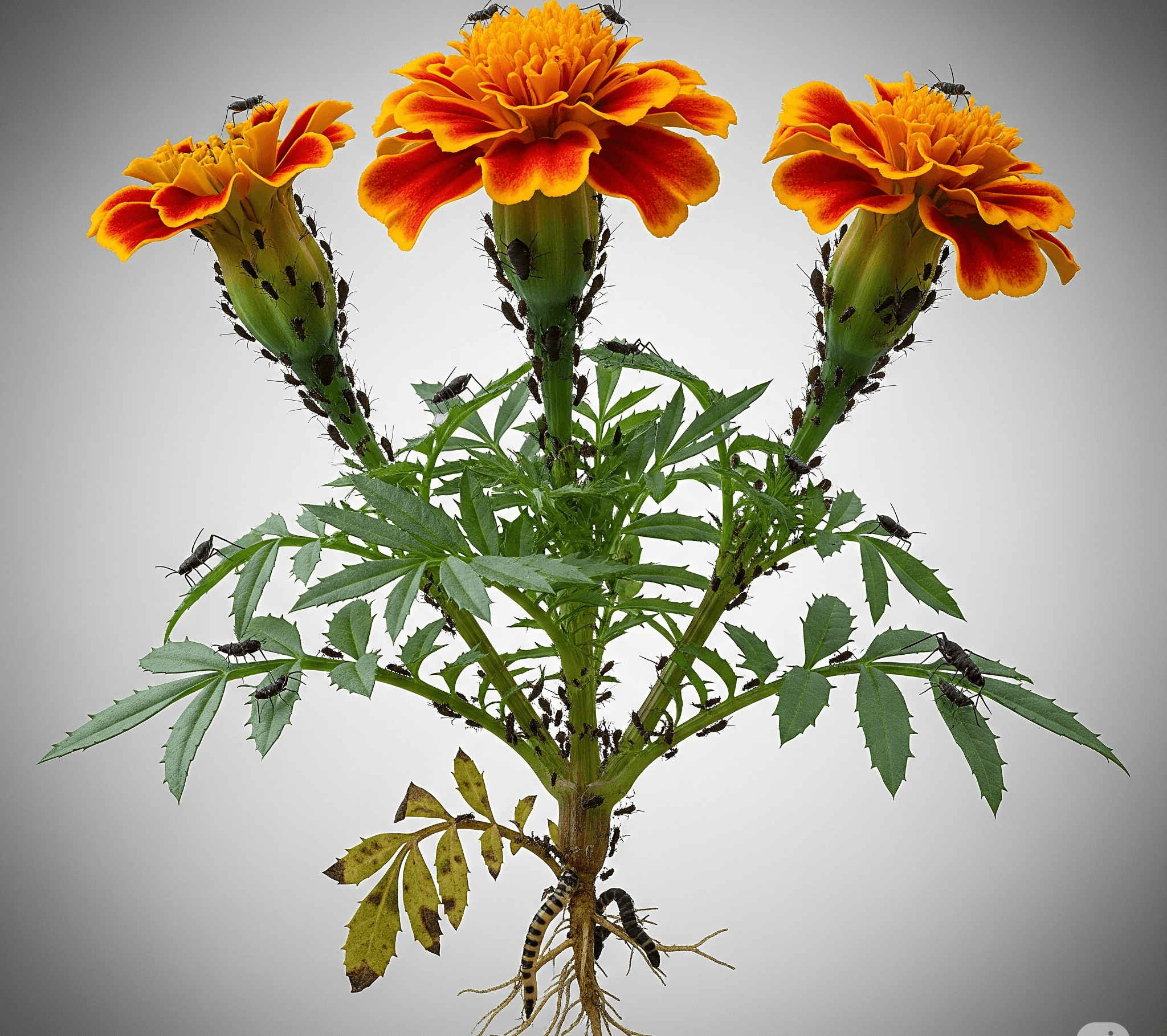About Lesson
Cultivation of Marigold
Botanical Information
- African Marigold: Tagetes erecta (2n = 24)
- French Marigold: Tagetes patula (2n = 48)
- Family: Asteraceae (Compositae)
- Plant Type: Hardy annual or short-lived perennial
- Flower Morphology: Composite flower head with ray and disc florets
- Pollination: Cross-pollinated by insects (entomophily), although self-pollination may occur in some varieties
- Root system: Well-branched fibrous root system
Importance and Characteristics
- Marigold is popular due to its easy cultivation, wide adaptability, attractive colors, varied shapes and sizes, and good keeping quality.
- Genetic male sterility is common in marigold.
- Potendry type of self-incompatibility is found in marigold.
Climate
- Requires mild climate for healthy growth and flowering.
- Planting is done in three seasons: Rainy, Summer, and Winter.
- Avoid planting African marigold between 1st week of February to 1st week of July, as it affects quality and yield.
- Staggered planting from 1st week of July to 1st week of February ensures a continuous supply of flowers from October to April.
- Maximum yield is obtained from September-planted crops.
- Optimum temperature for marigold cultivation: 18–30°C
Soil Requirements
- Grows in a wide range of soils except waterlogged areas.
- Best suited: Deep, fertile, well-drained sandy loam rich in organic matter.
- Soil pH: 6.0 to 7.5 (neither too acidic nor too alkaline).
Selection of Site
- Choose a sunny location for cultivation.
- Under shade, plants show excessive vegetative growth but fail to flower.
Varieties
- Arka Bangara-1
- Arka Bangara-2
- Arka Agni
- Pusa Narangi Gainda
- Pusa Basanti Gainda
Propagation
By Seed
- Common method of propagation.
- Seed rate: 1 to 1.5 kg/ha.
- Sow seeds on nursery beds in shallow furrows.
- Seedlings ready for transplanting in one month.
By Herbaceous Cuttings
- Used for non-seed-setting varieties like Giant African Yellow and Giant African Orange.
- Use apical shoots (10 cm) for cuttings.
- Each cutting should have 1–2 pairs of leaves.
- Inserted in sand medium (seed pan or nursery bed) for rooting.
Transplanting of Seedlings
- Use 1-month-old seedlings with 3–4 leaves.
- Water nursery beds a day before uprooting to minimize root damage.
- Transplant in the evening for better establishment.
Spacing
- African Marigold:
60 × 30 cm or 45 × 30 cm - French Marigold:
20 × 20 cm or 20 × 15 cm
Intercropping & Companion Planting
- Acts as a trap crop in integrated pest management (IPM), especially for nematodes and whiteflies
- Commonly intercropped with:
- Tomato
- Cabbage
- Chili
- Brinjal
- Its strong aroma repels insect pests
Pinching
- Pinching = Removal of apical bud
- Encourages lateral branches and a bushy plant with more uniform flowers.
- Recommended after 40 days of transplanting for both African and French types.
Staking
- Required for tall African marigold varieties.
- Use bamboo sticks to support the plant.
- Prevents lodging and bent stems that affect flower quality.
Harvesting
- Harvest when flowers are fully open.
- Preferably harvest in the morning or evening.
- Irrigate the field before harvest to improve post-harvest flower quality.
- Regular flower picking and removal of dried flowers increase productivity.
Yield
- Varies with type and variety.
- Normal yield: 4–6 tonnes/acre
- Giant African Yellow (Sept. planting): up to 10 tonnes/acre
Seed Production: Seeds should be collected from winter crops only.
Seed Yield:
- African Marigold: 120–150 kg/acre
- French Marigold: 400–500 kg/acre
Insect-Pest Management
- Aphids: Suck sap; controlled by spraying Neem oil or Imidacloprid
- Thrips: Causes leaf curling and flower distortion
- Nematodes: Marigold roots release chemicals (α-terthienyl) that suppress nematode larvae

Diseases
- Botrytis blight (Gray mold): Promoted by high humidity, treat with Captan or Carbendazim
- Powdery mildew: Appears in dry, warm weather; treat with Sulphur dust or Tridemorph
- Damping off (nursery stage): Prevent with proper drainage and fungicidal seed treatment

